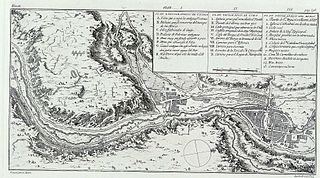
Decimus Junius Brutus Callaicus was a consul of the Roman Republic for the year 138 BC together with Publius Cornelius Scipio Nasica Serapio. He was an optimate politician and a military commander in Hispania and in Illyria. He was the son of Marcus Junius Brutus and brother of Marcus Junius Brutus. He had a son also named Decimus Junius Brutus and his grandson was Decimus Junius Brutus Albinus.

The Attalid dynasty was a Hellenistic dynasty that ruled the city of Pergamon in Asia Minor after the death of Lysimachus, a general of Alexander the Great.

The Celtiberians were a group of Celts and Celticized peoples inhabiting the central-eastern Iberian Peninsula during the final centuries BC. They were explicitly mentioned as being Celts by several classic authors. These tribes spoke the Celtiberian language and wrote it by adapting the Iberian alphabet. The numerous inscriptions that have been discovered, some of them extensive, have allowed scholars to classify the Celtiberian language as a Celtic language, one of the Hispano-Celtic languages that were spoken in pre-Roman and early Roman Iberia. Archaeologically, many elements link Celtiberians with Celts in Central Europe, but also show large differences with both the Hallstatt culture and La Tène culture.

Numantia was an ancient Celtiberian settlement, whose remains are located 7 km north of the city of Soria, on a hill known as Cerro de la Muela in the municipality of Garray.

The Vettones were a pre-Roman people of the Iberian Peninsula of possibly Celtic ethnicity.

The book History of Rome, sometimes referred to as Ab Urbe Condita, is a monumental history of ancient Rome, written in Latin between 27 and 9 BC by the historian Titus Livius, or "Livy", as he is usually known in English. The work covers the period from the legends concerning the arrival of Aeneas and the refugees from the fall of Troy, to the city's founding in 753, the expulsion of the Kings in 509, and down to Livy's own time, during the reign of the emperor Augustus. The last event covered by Livy is the death of Drusus in 9 BC. About 25% of the work survives. The surviving books deal with the events down to 293 BC, and from 219 to 166 BC.

The Vaccaei or Vaccei were a pre-Roman Celtic people of Spain, who inhabited the sedimentary plains of the central Duero valley, in the Meseta Central of northern Hispania. Their capital was Intercatia in Paredes de Nava.

The Celtiberian oppidum of Numantia was attacked more than once by Roman forces, but the Siege of Numantia refers to the culminating and pacifying action of the long-running Numantine War between the forces of the Roman Republic and those of the native population of Hispania Citerior. The Numantine War was the third of the Celtiberian Wars and it broke out in 143 BC. A decade later, in 133 BC, the Roman general and hero of the Third Punic War, Scipio Aemilianus Africanus, subjugated Numantia, the chief Celtiberian city.
The Second Celtiberian War was one of the three major rebellions by the Celtiberians against the presence of the Romans in Hispania.
The First Celtiberian War and Second Celtiberian War were two of the three major rebellions by the Celtiberians against the presence of the Romans in Hispania.

The Arevaci or Aravaci, were a Celtic people who settled in the central Meseta of northern Hispania and dominated most of Celtiberia from the 4th to late 2nd centuries BC. The Vaccaei were their allies.
Quintus Fulvius Nobilior was a Roman consul who obtained the consulship in 153 BC. His father Marcus Fulvius Nobilior and his brother Marcus Fulvius Nobilior were also consuls.

The Turboletae or Turboleti were an obscure pre-Roman people from ancient Spain, which lived in the northwest Teruel province since the early 3rd Century BC.

The Belli, also designated Beli or Belaiscos were an ancient pre-Roman Celtic Celtiberian people who lived in the modern Spanish province of Zaragoza from the 3rd Century BC.
This section of the timeline of Hispania concerns Spanish and Portuguese history events from the Carthaginian conquests to before the barbarian invasions.

Mara is a municipality in province of Zaragoza, Aragon, Spain. According to the 2008 census (INE), the municipality has a population of 212 inhabitants.

Segóbriga was an important Celtic and Roman city, and is today an impressive site located on a hill near the present town of Saelices. Research has revealed remains of important buildings, which have since been preserved and made visible in the Archaeological Park. It was declared a National Monument on June 3, 1931, and is now considered cultural heritage under the official denomination Bien de Interés Cultural which comes with extensive legal protections.

Uxama Argaela was a Celtiberian, and subsequently Roman, city located on El Castro hill, overlooking the present town of El Burgo de Osma in Soria, Spain.

Termantia, the present-day locality of Tiermes, is an archaeological site on the edge of the Duero valley in Spain. It is located in the sparsely populated municipio of Montejo de Tiermes.

The Battle of the Isère River took place near the modern day French town of Valence at the confluence of the Isère and Rhône rivers. A first confrontation had been won by Gnaeus Domitius Ahenobarbus at the Battle of Vindalium, further south in the Rhône Valley. Domitius and Quintus Fabius Maximus Allobrogicus joined their forces and defeated a confederation of Allobroges, Arverni and some Salluvii warriors at the Isère River.















